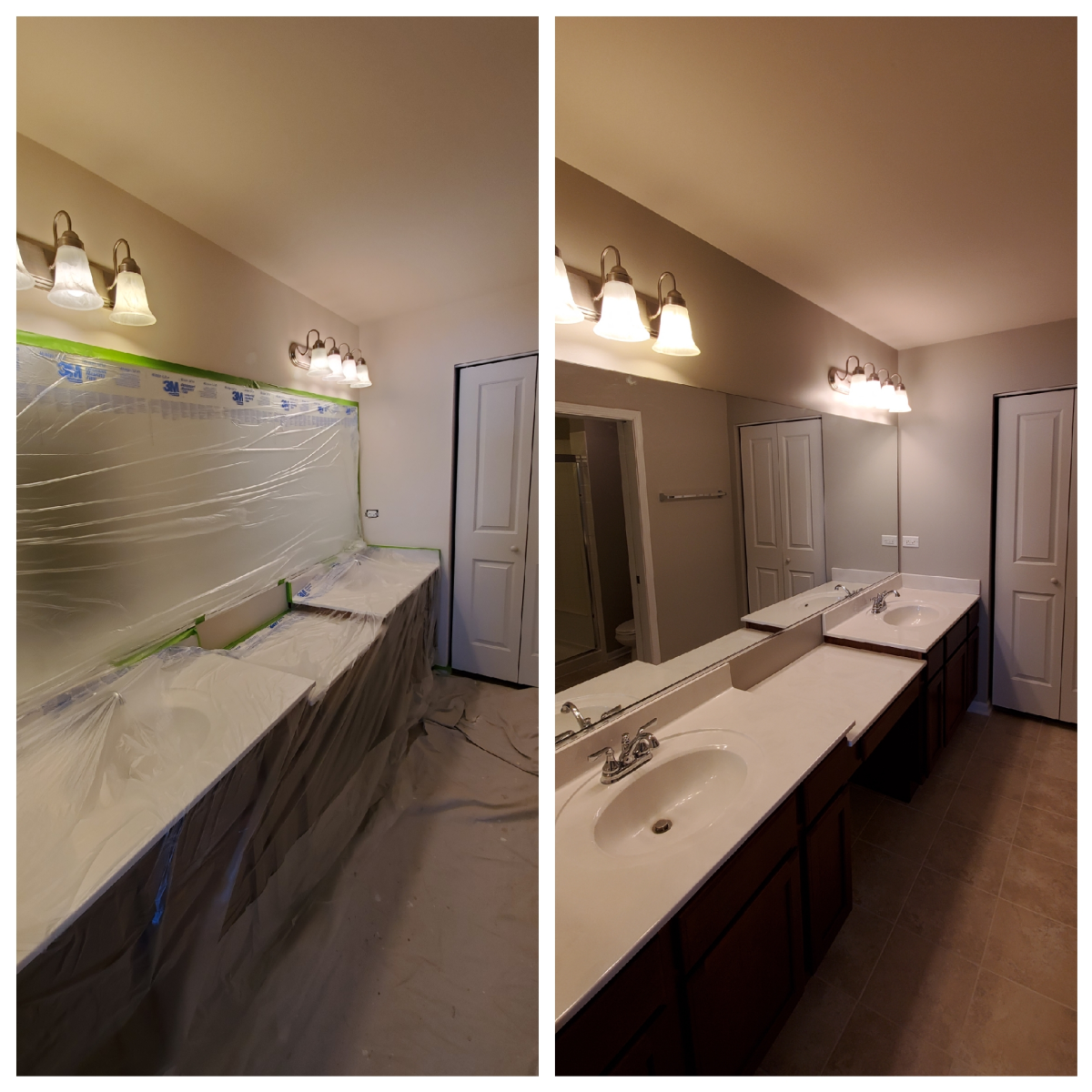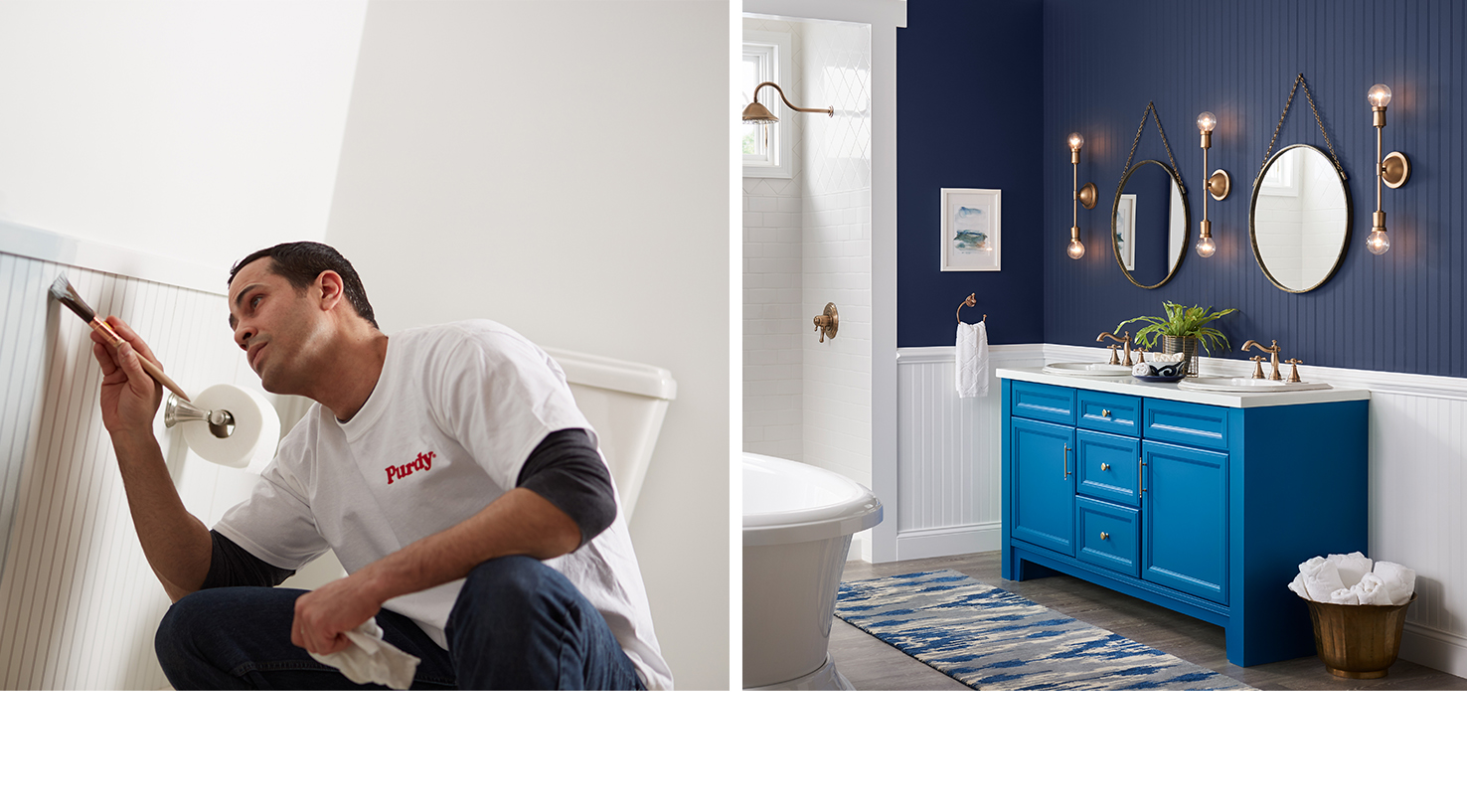Preparing Bathroom Walls for Painting

Prep bathroom walls for painting – Properly preparing bathroom walls before painting is crucial for ensuring a smooth, durable finish. Bathrooms are prone to moisture and humidity, which can affect the adhesion and longevity of paint. This guide provides a step-by-step approach to preparing bathroom walls for painting, including removing old paint, cleaning, and repairing any damage.
Before applying a fresh coat of paint to your bathroom walls, it’s crucial to prep them thoroughly. This includes cleaning the surfaces, removing any existing fixtures, and filling in any holes or cracks. Once your walls are prepped, you can start to think about adding some personal touches, such as Disney bathroom wall art.
With a wide variety of designs available, you can find the perfect piece to match your child’s personality and style. Once you’ve chosen your wall art, be sure to follow the manufacturer’s instructions for hanging it securely. With a little planning and effort, you can create a bathroom that your child will love spending time in.
Removing Old Paint
- Use a chemical paint stripper to remove old paint, following the manufacturer’s instructions carefully.
- For thicker layers of paint, use a heat gun or infrared paint stripper to soften the paint and scrape it off with a putty knife.
- Sand the walls lightly with a medium-grit sandpaper to remove any remaining paint residue.
Cleaning the Walls
After removing old paint, thoroughly clean the walls to remove dirt, grime, and mildew. Use a mixture of warm water and a mild detergent, such as dish soap. Rinse the walls with clean water and allow them to dry completely.
Repairing Damage
Inspect the walls for any damage, such as holes, cracks, or uneven surfaces. Fill holes and cracks with spackling paste and smooth it out. For larger holes, use a drywall patch.
For uneven surfaces, sand them down until they are smooth and level. Prime the repaired areas with a stain-blocking primer to prevent stains from bleeding through the paint.
Before applying fresh paint to bathroom walls, ensure a smooth and durable finish by sanding down imperfections, cleaning with a degreaser, and applying a primer. Consider enhancing the ambiance with globe wall sconces , which provide soft, ambient lighting and complement the clean lines of the newly painted walls, creating a cohesive and inviting bathroom space.
Essential Tools and Materials for Bathroom Wall Preparation: Prep Bathroom Walls For Painting

Preparing bathroom walls for painting requires a range of essential tools and materials. Having the right equipment ensures efficient and effective preparation, resulting in a smooth and professional-looking finish. This comprehensive list provides detailed descriptions and safety precautions for each item, guiding you in choosing high-quality products for optimal results.
Essential Tools
- Drop cloths: Large sheets of plastic or canvas used to protect floors and furniture from paint spills and debris. Choose durable drop cloths with reinforced edges to prevent tears.
- Spackling knife: A flexible blade used to apply and smooth spackling paste, filling holes and cracks. Opt for knives with stainless steel blades for rust resistance and durability.
- Sandpaper: Abrasive paper used to smooth rough surfaces, remove imperfections, and create a uniform texture for paint adhesion. Select sandpaper with different grits (coarse to fine) for various sanding tasks.
- Paint scraper: A tool with a sharp blade used to remove old paint, wallpaper, or adhesive residue. Choose scrapers with interchangeable blades for versatility and cost-effectiveness.
- Ladder or step stool: A stable platform used to reach higher areas of the walls safely. Choose ladders with wide bases and non-slip rungs for added stability.
Essential Materials
- Spackling paste: A pre-mixed or powder-based compound used to fill holes, cracks, and imperfections. Choose spackling paste specifically formulated for bathroom use, as it is moisture-resistant.
- Primer: A liquid applied to the walls before painting to create a smooth surface, enhance paint adhesion, and prevent stains from bleeding through. Select primers suitable for bathroom environments, offering moisture resistance and mildew prevention.
- Paint: Choose high-quality paint specifically designed for bathroom use, offering moisture resistance, mildew resistance, and durability. Opt for paints with a semi-gloss or satin finish for easy cleaning and a polished look.
- Caulk: A flexible sealant used to fill gaps and cracks around fixtures, preventing water damage and mildew growth. Choose caulk specifically formulated for bathroom use, offering waterproof and mildew-resistant properties.
- Cleaning supplies: Include sponges, cloths, and cleaning solutions for removing dust, dirt, and grease from the walls before painting. Use mild cleaning solutions to avoid damaging the surface.
Troubleshooting Common Issues During Bathroom Wall Preparation

Preparing bathroom walls for painting can involve several common issues that require specific troubleshooting techniques to ensure a successful painting project. These issues may include stubborn stains, uneven surfaces, and moisture problems.
It is crucial to address these issues effectively to achieve a smooth and professional-looking painted finish. By understanding the causes and implementing appropriate solutions, homeowners can overcome these challenges and prepare their bathroom walls optimally for painting.
Stubborn Stains
- Identify the type of stain (e.g., mildew, rust, grease) to determine the most effective cleaning method.
- Use a commercial stain remover or create a homemade solution (e.g., vinegar and water, baking soda and water).
- Apply the solution to the stain and allow it to penetrate for the recommended time.
- Scrub the stain gently with a soft brush or sponge.
- Rinse the area thoroughly with clean water and allow it to dry completely.
Uneven Surfaces
- Sand down any rough or uneven areas using fine-grit sandpaper.
- Fill any holes or cracks with spackling paste or joint compound.
- Apply a thin layer of primer over the patched areas to create a smooth surface.
- Once the primer is dry, sand the entire wall lightly to remove any imperfections.
Moisture Problems, Prep bathroom walls for painting
- Identify the source of the moisture (e.g., leaking pipes, poor ventilation).
- Repair any leaks or install a bathroom fan to improve ventilation.
- Apply a mold-resistant primer to prevent future moisture problems.
- Allow the primer to dry completely before painting.